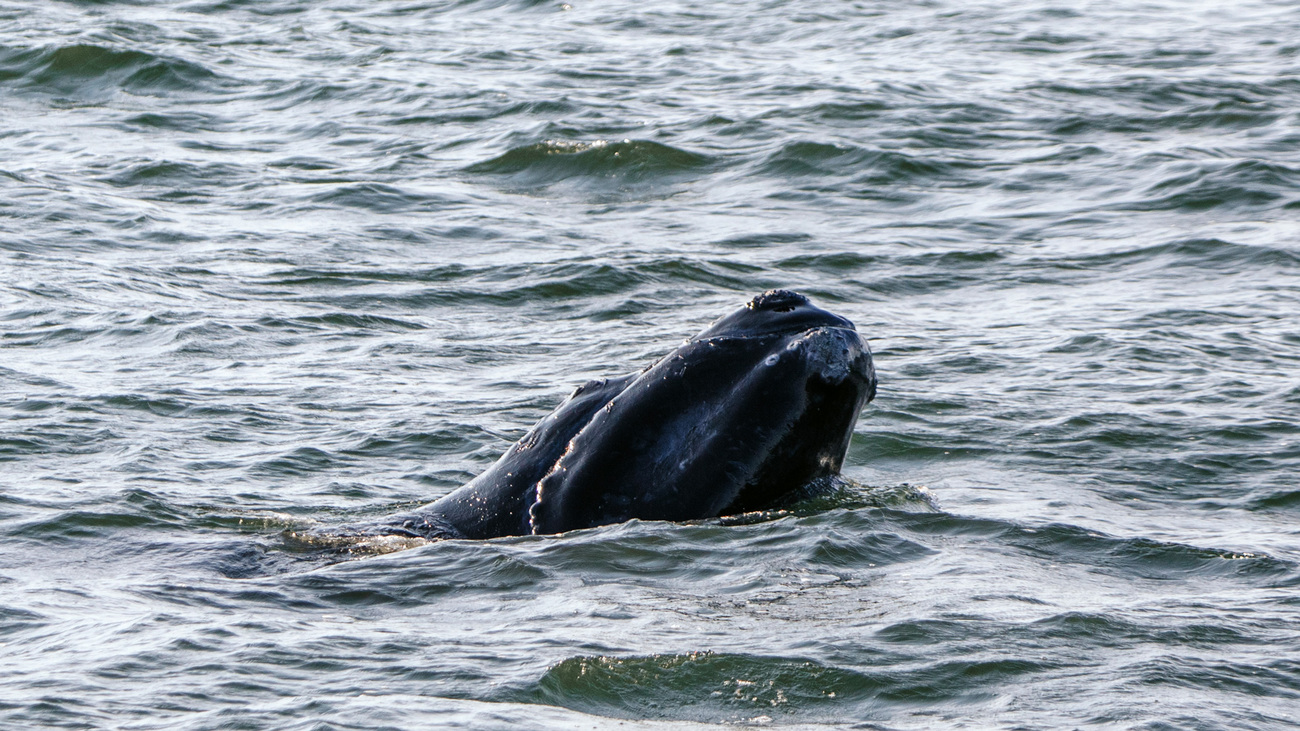Saving the North Atlantic right whale - North America
Don't fail our whaleUpdated North Atlantic right whale population numbers underscore urgency for the species
Updated North Atlantic right whale population numbers underscore urgency for the species

(Washington D.C. - October 21, 2025) —This morning, the North Atlantic Right Whale Consortium released its official population estimate for this critically endangered species. The population estimate for 2024 is 384 (+10/-9), including 11 calves from 2024. This represents a slight increase of 2.1% over the recalculated 2023 estimate of 376.
Experts urge that the continued leveling of the population numbers cannot be taken as a sign of a change of tide. There remains a dire need for serious collaboration between industry, government, and stakeholders if we have any hope of seeing this population fully rebound.
In response, Kathleen Collins, senior marine campaign manager with IFAW, issued the following statement:
“We are pleased to see, for the fourth year in a row, that the population estimate has not decreased; however, we remain adamant that more needs to be done to safeguard this vulnerable species.
While there are exciting advancements of technological tools added to the suite of solutions, like push AIS monitoring alerting mariners to whale presence resulting in decreased vessel speeds in specific areas, additional action is needed”
“Annual calving rates remain under the necessary threshold to grow the population. A lasting recovery is impossible if current trends and mounting threats continue. This population of whales is unhealthy, stressed, and unable to save themselves. The responsibility falls to us; we need to do what's right.”
Dr. Sarah Sharp, animal rescue veterinarian at IFAW added:
“This species remains in crisis. With only 11 calves born in the last season and chronic risks still facing the population, there is no room for complacency. Every individual whale counts—not only as a member of a critically endangered species, but as a vital contributor to the health of ocean ecosystems, biodiversity, and climate resilience.
“While it seems the sharp population decline may now be levelling off, we must not lose sight of the ongoing harm these animals endure. Vessel strikes and entanglements remain the primary human-caused threats. These injuries are often excruciating, and even if they are not fatal, they can have long-term impacts on a whale’s ability to feed, migrate, or reproduce. The health of the population begins with the wellbeing of each individual whale.”
“If we want to see meaningful recovery, our conservation strategies must go beyond survival—they must focus on restoring physical health and reducing suffering. That’s how we give this species a real chance at a future.”
//ENDS
NOTES:
Imagery / video can be found via hightail https://spaces.hightail.com/space/vOq5I6jzwI
- Vessel strikes and entanglement in fishing gear continue to be the primary causes of death and injuries to right whales.
- Over the past seven years, 41 North Atlantic right whales have tragically lost their lives, with vessel strikes leading as the most common determinable cause of death. IFAW is working closely with industry partners to decrease the risk of vessel strikes with high-tech solutions.
- IFAW and other stakeholders are working to meet the needs of whales and a healthy ocean ecosystem by partnering with fishing communities and mariners to advance pragmatic solutions, such as on demand fishing gear. This equipment removes the primary threat lobster and crab fishing gear poses to whales while keeping fishermen on the water, making a living by accessing fisheries that would otherwise be closed.
- IFAW is developing methods to save injured and entangled whales at sea and this is the only project on the US East Coast with the equipment and experienced personnel to deliver medications to fight infections caused by extensive injuries or sedatives to calm right whales so they can be disentangled.
- Additionally, by performing necropsies on stranded right whales, IFAW’s experts are able to determine causes of death and can assess whale health. This critical information is used to evaluate the efficacy of existing conservation policies and to inform future policies needed to ensure population recovery.
- NOAA’s relatively new analytical tool helps users understand how the right whale population will change over 100 years if threats are mitigated. The analysis from this tool clearly shows that it is not too late for this population if actions are taken now to reduce human impacts on this perilous species.
Press contact:
Stacey Hedman
Senior Communications Director
m: +1 508 737 2558
e: shedman@ifaw.org
Related content
Our work can’t get done without you. Please give what you can to help animals thrive.